Summer rose care
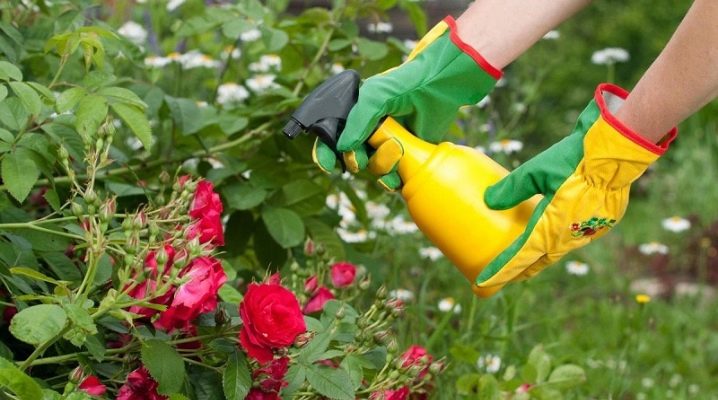
Miniature roses or lush bushes are a real decoration for any garden, with their help you can make flower beds, arches or gazebos more attractive. A beautiful and fragrant rose garden is the dream of most gardeners. But such a result can only be achieved through careful plant care, which are recognized as the queens of flowers.
Peculiarities
The lush blooming of the rose and its attractive appearance are the result of competent and timely care. To get beautiful bushes, you need to take care of regular watering, feeding, pruning and other equally important procedures. It is worth considering in more detail how to care for the plant, as well as study the recommendations of experienced gardeners who will help the bushes bloom profusely.
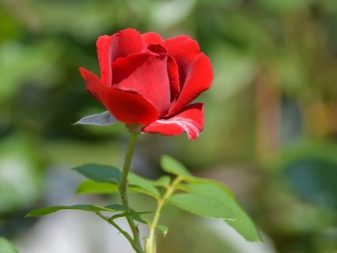

Watering
Caring for a street or home rose is, first of all, timely and regular watering. It is worth considering a number of recommendations and features that will help to achieve rapid plant survival and proper development.
- Moisture should be applied in the morning or evening. During the day or in the heat, it is better to refuse watering so as not to burn the bushes.
- Watering ground cover and other types of roses in the country or in the garden should be warm and previously settled water. The average temperature of the liquid should not be below 20 or above 22 degrees Celsius. Cool water can stress the roses and stop them blooming.
- It is recommended to add water to the soil at the root. It is not worth touching the base and leaves of the plant, so as not to burn them later with bright rays of the sun. The same goes for moisture getting on the flowers.
- On average, roses should be watered every 4-7 days, given the weather conditions. In hotter and drier weather, it is worth increasing watering, and during the rainy season, you can refuse to add additional moisture to the soil.
- The average watering rate is a bucket per bush. However, in the case of large bushes, it is recommended to increase the volume to 15-20 liters - this is 2 buckets.
- It is important to ensure that the soil is thoroughly moistened. The water must penetrate to a depth of 30 cm.
- Drip irrigation is ideal for roses as the plants will absorb moisture more thoroughly. Therefore, gardeners are advised to take care of purchasing or creating a special device with your own hands.
- Young bushes require more attention than adult roses.
Too frequent watering should be discarded. If the soil is too wet all the time, there is a high likelihood of developing fungal and other diseases.
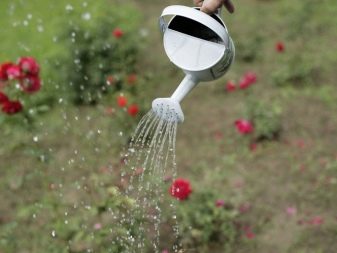
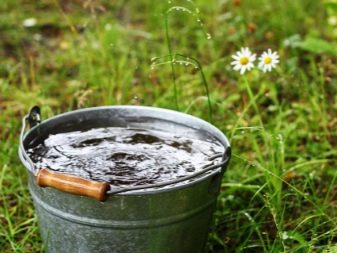
Top dressing
Roses need additional nutrients that strengthen the plant's immune system and increase the attractiveness and splendor of the buds. In addition, regular fertilization will increase the flowering time.
Gardeners use the following options as the main dressing.
- Phosphorus and Potassium. Helps the rose to form lush buds and prolongs flowering.
- Magnesium, boron and manganese. Prevents the development of various diseases.
- Solutions of superphosphate and potassium sulfate. With their help, the root system is fed.
- Solutions of superphosphate and potassium monophosphate. They help the rose to survive frosts and improve the flowering of the bush in the next season. Top dressing is applied mainly after the roses have faded.
Additionally, gardeners are advised to take care of foliar feeding of the plant by spraying the bushes with special preparations.An excellent solution would be "Bud" - a means to stimulate budding and flowering culture. Before using growth stimulants, you should carefully study the instructions. Many gardeners use urea as a top dressing.
Finally, do not give up feeding the bushes with ready-made fertilizers. Gardeners often buy Zircon, Buton Plus, and Pocon. Effective products help to improve the condition of the queen of flowers.
Fertilizer tips:
- regardless of the type of top dressing, before applying it, you should thoroughly water the soil so as not to burn the root system;
- it is worth adding nutrients, keeping a distance of 10 cm from the stem;
- it is recommended to spray the bushes in the evening or in cloudy weather to prevent sunburn of the plant;
- root fertilizers are best applied in the morning or late evening;
- on average, the interval between dressings should be 10-14 days.
Do not fertilize the plants too often, otherwise there is a high probability of a negative effect of fertilizers that can cause the death of the bushes.

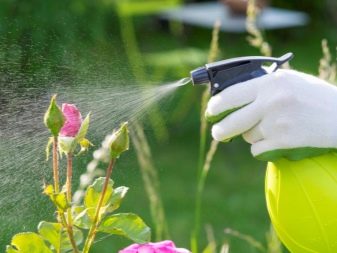
Loosening, weeding and mulching
In addition to watering and fertilizing, you should take care of the garden bed where the roses grow. One of the mandatory procedures is loosening, with the help of which it will be possible to grow lush and healthy bushes. Loosening has a positive effect on roses:
- improves soil aeration;
- prevents the development of an earthen crust;
- accelerates the flow of nutrients to the roots of the plant.
However, you can start the procedure only if the surface has not been mulched before. On average, the soil is loosened to a depth of 5 cm so as not to harm the root system. Loosening is often accompanied by weeding, which prevents disease and pests from spreading. In addition, timely removal of weeds ensures the supply of nutrients in the required amount.
Mulching is another important procedure, which is the care of both flower and vegetable, and even fruit crops. With its help, it will be possible to slow down the evaporation of moisture, which eliminates the need for frequent watering of the plants. Also, mulch can protect bushes from overheating in case of drought or too hot weather. The beds should be mulched immediately after planting the bushes or in the spring. The mulch material is usually harvested in the fall, changing it to a new one in order to prevent the development of the larvae of various pests. Wood shavings, sawdust, and straw are often used as mulch.
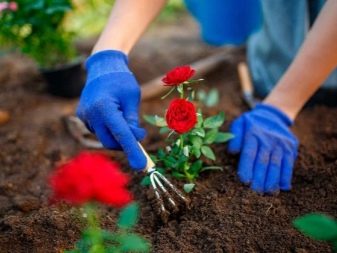
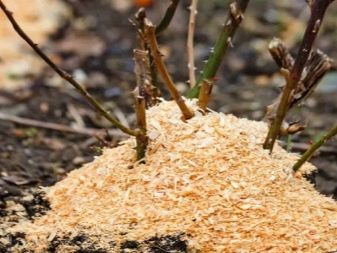
Pruning
Roses are pruned mainly in autumn and spring, but in July and August in the Moscow region, gardeners also recommend this procedure. First, summer pruning is done for sanitary purposes. Roses should be inspected periodically for dry, damaged, broken stems. It is also recommended to prune branches that have begun to grow inside the bush in order to prevent a decrease in the immunity of the rose and the development of various diseases. Additionally, in June, it is advised to cut off inflorescences that have already faded. Otherwise, the rose will begin to form the seed pod, and the buds will become more faded and smaller. On average, such formations should be removed once a week from park roses. Then it will be possible to achieve lush and beautiful flowers.
Interestingly, summer pruning has its own nuances depending on the type of rose.
- Climbing. In such plants, it is recommended to remove the entire brush at once up to the first leaf if flowers are found on the shoots of the second year. Pruning should be carried out in the first half of summer in order to develop the branching of the bush.
- Hybrid tea. In the first month of summer, the main stem should be pruned, leaving only 2-3 leaves above the ground. Then the bush will begin to develop new shoots. Also, gardeners are advised to remove dry branches during the summer.
- Shrubs, floribundas and other types of roses that bloom with tassels. In the middle of summer, the entire brush should be cut off, leaving 3 leaves at the bottom.
Regardless of the type, before pruning, the tool should be thoroughly disinfected so as not to cause the development of diseases in the plant, which will prolong the life of the bushes.
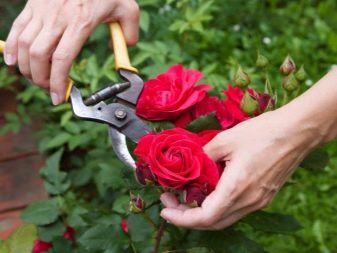
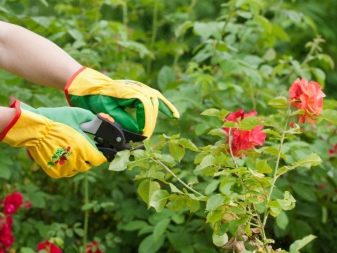
Diseases and pests
Rose, like any other flowers grown on the street, is susceptible to diseases with improper care and other unfavorable conditions. If the leaves dry and curl, become stained or fall off, the rose must be treated immediately. Common plant diseases:
- powdery mildew;
- chlorosis;
- rust;
- black spot.
To prevent the development of any of the listed ailments, it is worth taking care of preventive measures. To do this, gardeners are advised to treat the bushes with such fungicides as "Baktofito", "Ridomil Gold", "Profit Gold", and other special means that can be bought at any gardening store. The use of such formulations should be approached responsibly, having previously studied the instructions.
If the rose is already affected, it is necessary to carefully examine the bush and immediately remove the diseased areas. Additionally, the affected elements are recommended to be burned to prevent the spread of the disease to other crops.
After pruning, it is worth spraying the bushes with fungicides. After 2 weeks, it is necessary to re-process.
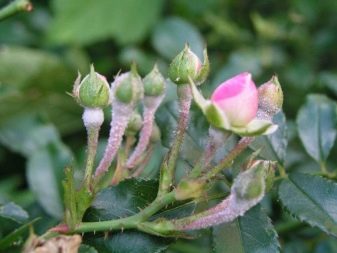
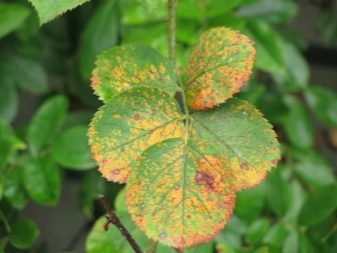
As for pests, frequent and unwanted guests of roses are:
- aphid;
- Caterpillar;
- penny slobber;
- sawfly;
- cicada.
You can also protect a plant from such a scourge by preventive treatment. Most often, gardeners use folk remedies, using powder from tobacco dust and wood ash, obtained by mixing components in equal amounts. Such processing should be carried out every 10 days.
In the case of active attacks of pests, treatment with drugs such as Fitoverm or Aktofit can be carried out. In the absence of preventive treatments, there is a high probability of damage to the plant by various diseases that insects can bring with them. Then it will take more time to fix the problem.

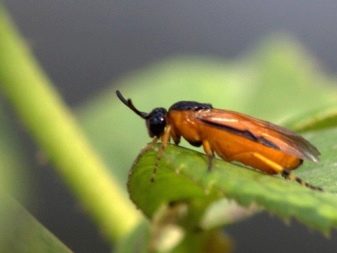

































































































The comment was sent successfully.